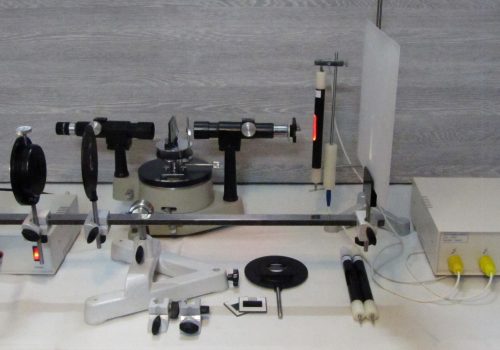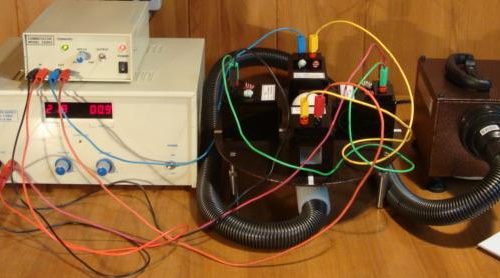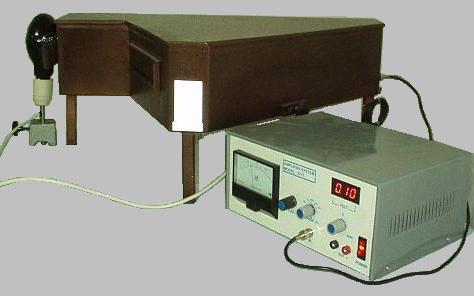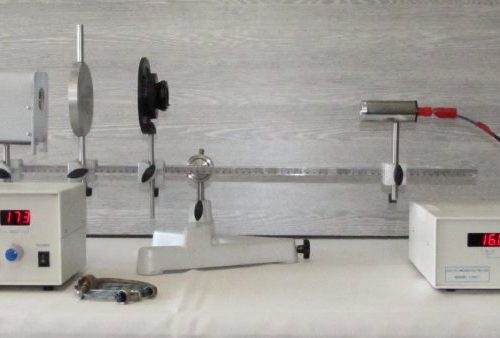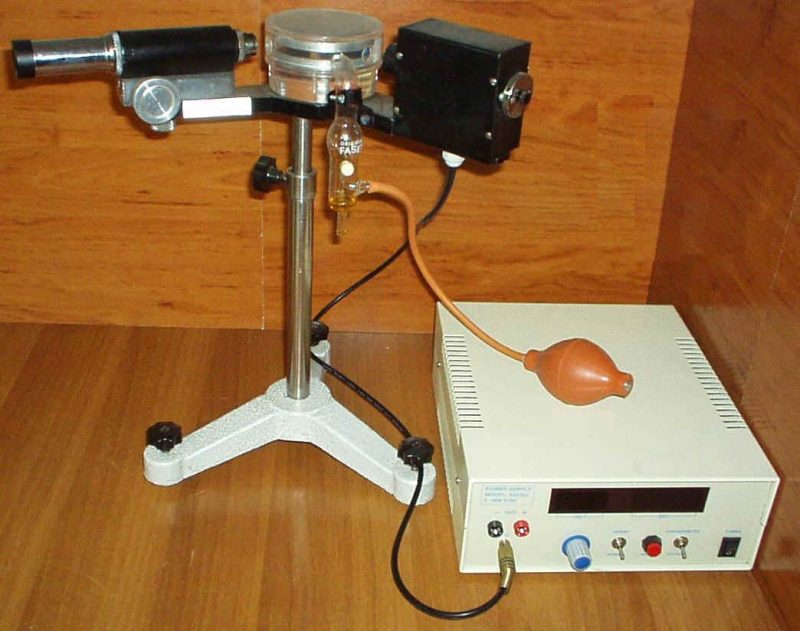
آزمایش میلیکان(Millikan's oil drop Exp)
Model 2-2
Modern Experiments
هدف آزمایش:
به دست آوردن بار الکتریکی اساسی (بار الکترون) با بکارگیری میدان الکتریکی و معلق نگه داشتن قطره روغن باردار در این میدان
وسایل آزمایش:
دستگاه میلیکان ، سیستم الکترونیک میلیکان ، سیم رابط معمولی ۲عدد (۱۰۰cm)
:Descriptions
Determining the electrical charge of the electron after Millikan and demonstrating the quantum nature of the charge-measuring the rising speed and the falling speed with his famous oil-drop method, R.A. Millikan succeeded in demonstrating the quantum nature of minute amounts of electricity in 1910. He caused charge oil droplets to be suspended in the vertical electric field of a plate capacitor and, on the basis of the radius r and the electric field E, determined the charge q of a suspended droplet: q=(۴p/3).r۳.(r.g/E) ; r: density of oil, g: gravitational acceleration. He discovered that q only occurs as a whole multiple of electron charge e. His experiments are produced here in two variations. In the first variation, the electric field E=U/d ; d: plate spacing is calculated from the voltage U at the plate capacitor at which the observed oil droplet just begins to hover. The constant falling velocity v۱ of the droplet when the electric field is switched off is subsequently measured to determine the radius. From the equilibrium between the force of gravity and Stokes friction, we derive the equation (4p/3).r۳.r.g = 6p.r.h.v۱ ; h: viscosity. In the second variant, the oil droplets are observed which are not precisely suspended, but which rise with a low velocity v۲. The following applies for these droplets: q. (U/d)= (۴p/3).r۳.r.g+6p.r.h.v۲ . Additionally, the falling speed v۱ is measured, as in the first variant. The measuring accuracy for the charge q can be increased by causing the oil droplet under study to rise and fall over a given distance several times in succession and measuring the total rise and fall times
:Required equipments for the Experiment
Power supply unit for Millikan experiment ۳۳۰۳۰۲
Connection leads (N=2) ۱۱۰۰۰۰

